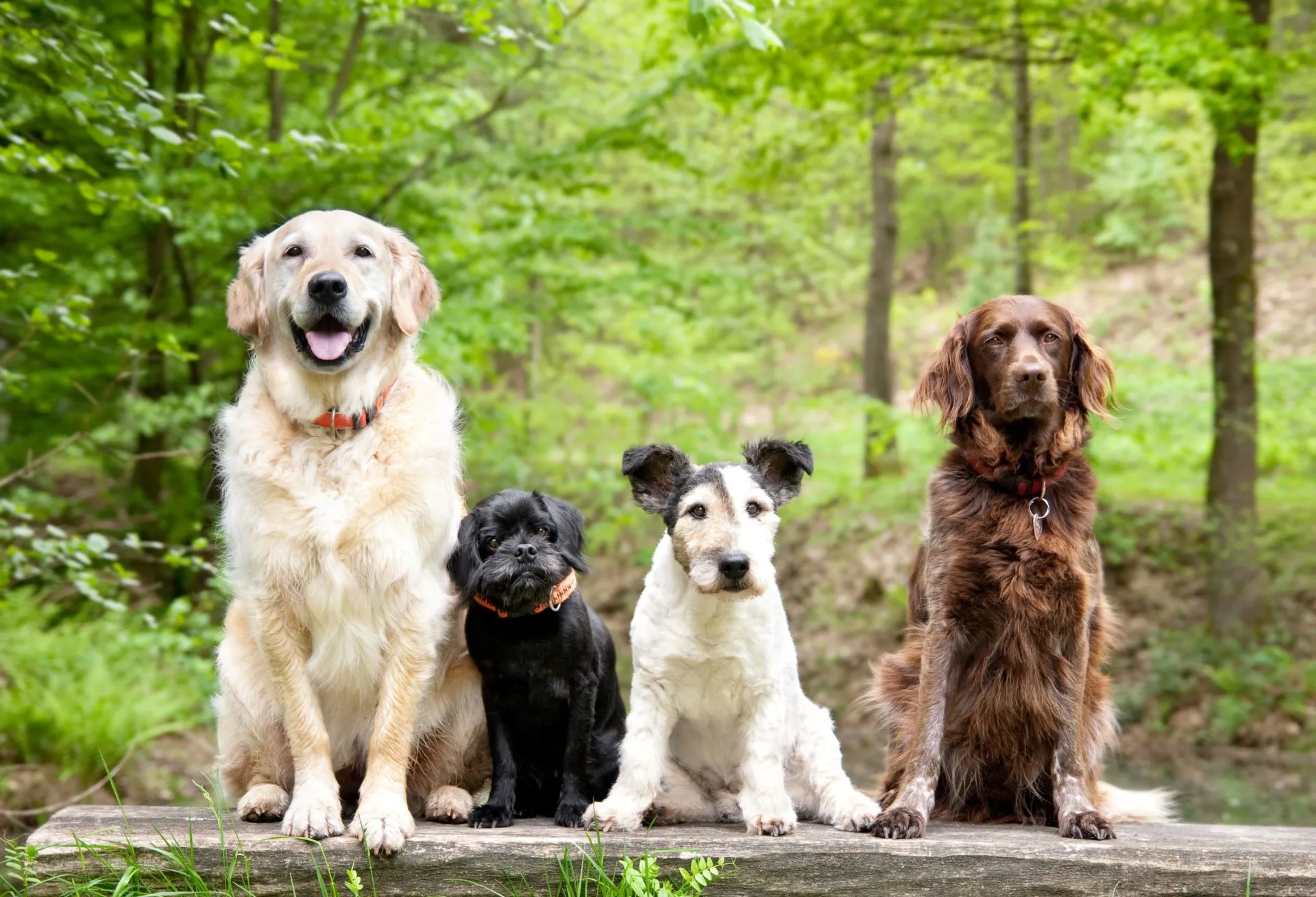At this time of year, many people are busy baking those delicious seasonal foods. If you like cooking, there’s a pretty good chance that your dog will be paying close attention when you are in the kitchen. Why not make something special for your pooch? Here, a Salem, VA vet list some simple holiday treats you can make your dog.
Fido’s Festivus Treats
Combine natural peanut butter, bacon grease, whole-wheat flour, plain yogurt, and a little baking soda. Roll the batter out, and then cut it into cute shapes. You’ll need to bake these treats for about 15 minutes at 375.
Pumpkin Bites
Mix pureed pumpkin with natural peanut butter, eggs, and whole-wheat flour. Combine everything into a batter, and portion it out into small servings. Cook for 15-20 minutes at 350.
Sweet Potato Bites
For these treats, you’ll mix a cup of canned sweet potato with some brown rice flour and an egg. Cook at 350 for about 20 minutes.
Jerky
This one is super easy! Slice sweet potatoes, apples, boneless chicken, or steak into thin pieces. Cook them for several hours on 250, turning once.
Tuna Yums
Both Fido and Fluffy can enjoy these treats! Combine canned tuna or chicken in water with plain yogurt and parsley. Once you have the mixture divided into small portions, cook for 20 minutes at 375.
Doggy Biscuits
These snacks consist of sodium-free beef or chicken broth, liver powder, shredded cheese, bacon bits, eggs, whole-wheat flour, and a little salt. Mix everything together, and then divide into small portions. Cook at 350 for a half hour.
Chicken Snacks
Combine diced or shredded chicken, cooked rice, rice flour, tablespoon of parsley, and an egg in a food processor. Portion out the batter, and cook at 350 for 20-30 mins.
Tips
Although your pooch won’t care what his snacks look like, it’s always a cute touch to use a bone-shaped mold. This also can help distinguish your dog’s snacks from other holiday cookies. Put the finished product in a mason jar, and tie a festive ribbon around it. These are also a great gift option for Fido’s canine buddies! Also, be sure to stick to pet-safe ingredients. Never use garlic, onions, scallions, or chives; nuts; grapes, currants or raisins; xylitol; chocolate; pitted fruits; avocado; caffeine; or alcohol. In addition to monitoring your dog’s diet, learn how to maintain their dental health with our guide on ‘5 Ways to Keep Your Dog’s Teeth Healthy’. For personalized advice on balancing your dog’s diet and managing their weight, explore our ‘Nutrition & Weight Management’ services.
Our Advice on Holiday Cookies for Fido in 2024
What are the recommended serving sizes for these homemade dog treats based on a dog’s size and weight?
Recommended serving sizes for homemade dog treats vary based on a dog’s size and weight to prevent overfeeding and maintain optimal health. For small dogs, treats should be about the size of a dime to a nickel, weighing around 5-10 grams each. Medium dogs can handle treats about the size of a quarter, weighing 10-15 grams. For large dogs, treats about the size of a half dollar, weighing 15-25 grams, are suitable. Limiting treats to no more than 10% of a dog’s daily caloric intake is essential to avoid weight gain.
How can dog owners ensure that they are using high-quality, safe ingredients when preparing these homemade treats?
Dog owners can ensure they use high-quality, safe ingredients for homemade treats by selecting fresh, human-grade foods and avoiding any items toxic to dogs, such as onions, garlic, xylitol, and chocolate. Opt for natural, unsalted peanut butter without xylitol, and use whole-wheat flour or an appropriate grain-free substitute if needed. Always check that meats are fresh and cooked thoroughly to avoid pathogens. Additionally, consulting a vet about safe ingredients and appropriate food handling can help prevent health issues and ensure the treats are beneficial for their dog.
What are some signs that a dog may be having an adverse reaction to one of these homemade treats, and what steps should owners take if they notice these symptoms?
Signs that a dog may be having an adverse reaction to homemade treats include vomiting, diarrhea, excessive gas, lethargy, or changes in appetite. If an owner notices these symptoms, they should immediately stop feeding the treats and monitor the dog’s condition closely. If symptoms persist, worsen, or if the dog shows signs of distress, such as difficulty breathing or swelling, it’s crucial to consult a veterinarian promptly. Additionally, reviewing the treat ingredients and ensuring they are safe for dogs can help identify any potential allergens or harmful substances.
Are there any specific health conditions or dietary restrictions that may make these homemade treats unsuitable for certain dogs?
Yes, certain health conditions or dietary restrictions can make homemade treats unsuitable for some dogs. Dogs with allergies or sensitivities to specific ingredients, such as wheat or certain proteins, should avoid treats containing those allergens. Dogs with diabetes or weight issues should steer clear of treats high in sugar or fat. Additionally, dogs with chronic conditions like kidney disease or pancreatitis may require low-protein or low-fat diets, respectively, making many common treatment recipes inappropriate. Owners should consult their veterinarian to tailor treat choices to their dog’s specific dietary needs.
How can dog owners use these homemade treats as part of a positive reinforcement training program or to encourage good behavior?
Dog owners can effectively use homemade treats as part of a positive reinforcement training program by offering them as rewards for good behavior or successfully following commands. The key is to administer the treat immediately after the desired behavior to reinforce the action with a positive outcome, helping the dog make a clear connection between the behavior and the reward. It’s essential to keep the treats small and to account for their caloric value within the dog’s daily food intake to avoid overfeeding. Regular, consistent use of treats in training sessions can enhance learning and obedience.
Please contact us, your Salem, VA vet clinic, anytime. We’re here to help!



